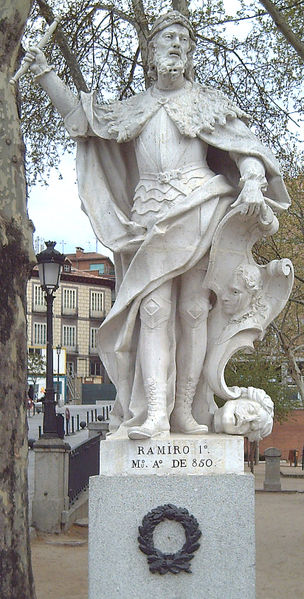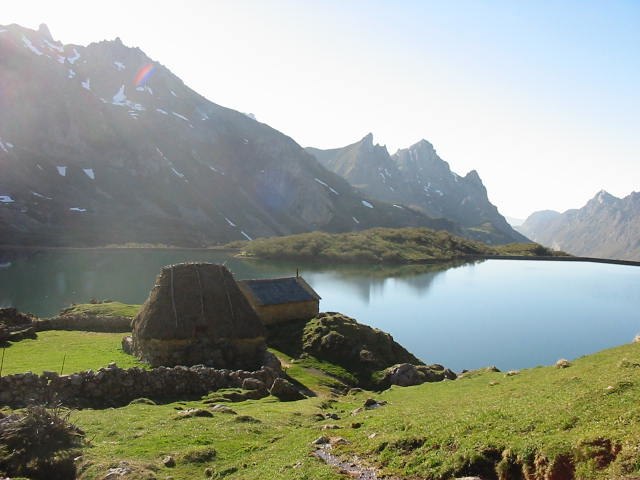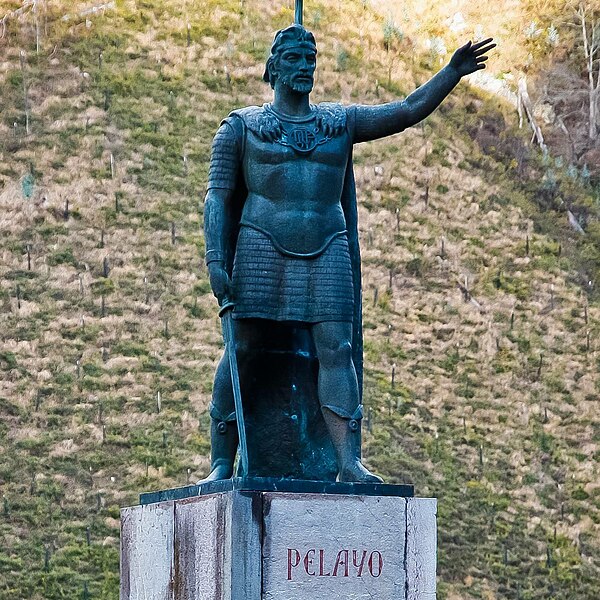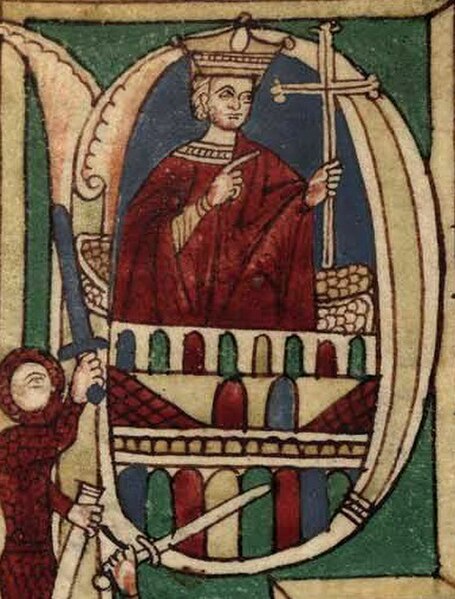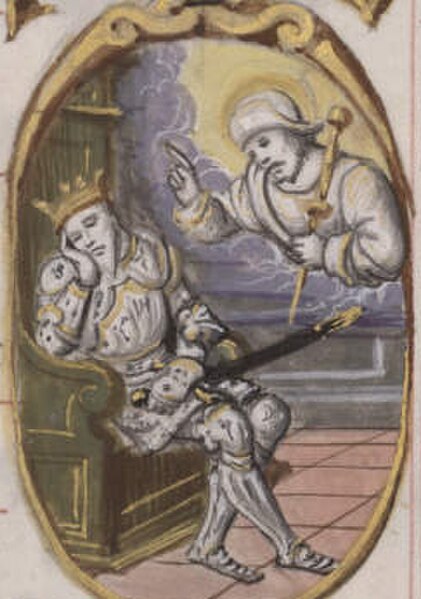Ramiro I was king of Asturias from 842 until his death in 850. Son of King Bermudo I, he became king following a succession struggle after his predecessor, Alfonso II, died without children. During his turbulent reign, he fended off attacks from both Vikings and the forces of al-Andalus. Architecturally, his recreational palace Santa María del Naranco and other buildings used the ramirense style that prefigured Romanesque architecture.
He was a contemporary of Abd ar-Rahman II, Umayyad Emir of Córdoba.
Ramiro's mark on the Celeiro, an 8th-century document confirmed by several subsequent kings
19th-century imaginary portrait by Isidoro Lozano
An 18th-century statue in the Royal Palace of Madrid depicting the artist's concept of Ramiro I
Santa María del Naranco in Oviedo was originally a recreational palace of Ramiro's, and then a church
The Kingdom of Asturias was a kingdom in the Iberian Peninsula founded by the Visigothic nobleman Pelagius. It was the first Christian political entity established after the Umayyad conquest of Visigothic Hispania in 711. In 718 or 722, Pelagius defeated an Umayyad army at the Battle of Covadonga, in what is retroactively regarded as the beginning of the Reconquista.
Picture of ḷḷagu del Vaḷḷe (Somiedo), showing typical Asturian cottages (called teitos), as already in use in the time of the Astures
Monument in memory of Pelagius in Covadonga
King Pelagius at the Battle of Covadonga
Ramiro I of Asturias



